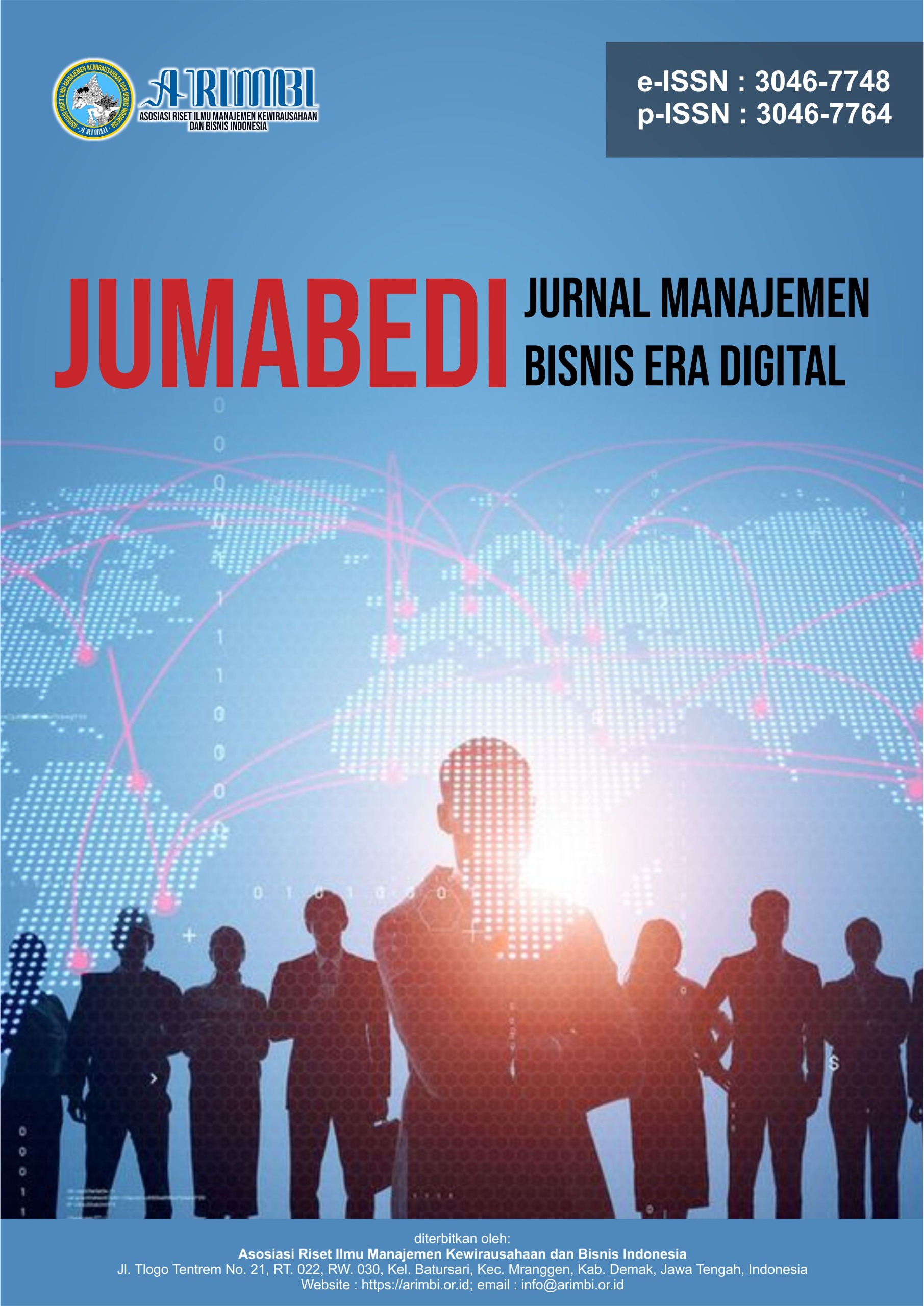Strategi Pengembangan Usaha pada UMKM Depot Kusen Rahmat dengan Menggunakan Teknik Analisis SWOT dan QSPM
DOI:
https://doi.org/10.61132/jumabedi.v2i3.746Keywords:
Business Development, Door Frame Depot, MSMEs, QSPM, SWOT AnalysisAbstract
This study aims to analyze the business development strategy of Depot Kusen Rahmat by reviewing four main aspects, namely production, human resources (HR), finance, and marketing. The analytical approach used in this study is SWOT (Strengths, Weaknesses, Opportunities, Threats) and QSPM (Quantitative Strategic Planning Matrix). Primary data was obtained through a survey of 16 respondents who are active consumers of Depot Kusen Rahmat. The results of the SWOT analysis identified that the company has four strengths, four weaknesses, four opportunities, and four threats. The most dominant internal strength is efficient and neat products, with the highest weighted score of 0.509, which indicates that the quality of production results is the main competitive advantage. On the other hand, the main weakness found is the absence of a product catalog, with a score of 0.158, which indicates a lack of visual information media as a means of product promotion and communication to consumers. From external factors, the biggest opportunity is the increasing consumer interest in custom products, with a score of 0.479, which indicates a positive trend towards product personalization. The most significant threat is the rapidly changing design trends, with a score of 0.186, which requires the company to be more adaptive to changing market tastes. Based on the results of the SWOT matrix analysis, the company's position is in Quadrant I with an IFAS value of 1.368 and EFAS of 1.206, which indicates that the company is in a position to support an aggressive growth strategy. The QSPM results recommend prioritizing strategies in the form of emphasizing quality and balanced prices, followed by improving customer service and developing high-quality custom products as strategic steps to win market competition and increase business competitiveness sustainably.
Downloads
References
Aditama, R. A. (2023). Manajemen strategi: Teori, aplikasi dan studi kasus. AE Publishing.
Adnyana, I. M. (2020). Studi kelayakan bisnis [E-book]. LPU UNAS. http://repository.unas.ac.id/3772/1/BUKU%20SKB%202020%20OK.pdf
Atmaja, H. E., & Ratnawati, S. (2020). Pengembangan pariwisata melalui integrasi perencanaan sumber daya manusia dengan perencanaan strategis objek wisata Taman Bunga Manohara. Jurnal Jendela Inovasi Daerah, 3(1), 49–69.
Bangun, C. F. B., Yuniar, V., Bugis, S. W., & Suhartini, S. (2022). Analisis studi kelayakan bisnis pada pengembangan UMKM usaha tahu dan tempe di Desa Pondok Jeruk ditinjau dari aspek produksi, aspek pemasaran dan aspek keuangan. Transformasi Manageria: Journal of Islamic Education Management, 2(2), 142–151.
David, F. R., David, F. R., & David, M. E. (2023). Strategic management: A competitive advantage approach, concepts and cases (17th ed.). Pearson.
Ernawati, E., Hurriyati, R., & Dirgantari, P. D. (2021). Strategi pengembangan kerajinan anyaman purun untuk meningkatkan daya saing. Jurnal Ekonomi Modernisasi, 17(1), 27–40.
Fatimah, F. N. D. (2020). Teknik analisis SWOT: Pedoman menyusun strategi yang efektif & efisien serta cara mengelola kekuatan & ancaman. Anak Hebat Indonesia.
Indonesia, Kementerian Perdagangan. (2024). Jadi tulang punggung ekonomi Indonesia, begini tips usaha mikro agar naik kelas. https://www.kemendag.go.id/berita/pojok-media/jadi-tulang-punggung-ekonomi-indonesia-begini-tips-usaha-mikro-agar-naik-kelas
Indonesia. (2008). Undang-undang No. 20 tahun 2008 tentang Usaha Mikro, Kecil, dan Menengah. Lembaran Negara Republik Indonesia Tahun 2008 No. 93. Sekretariat Negara.
Jaelani. (2021). Teori organisasi. Yayasan Prima Agus Teknik Redaksi.
Kotler, P., & Keller, K. L. (2016). Marketing management (Global ed., 13th ed.). Pearson Education Limited.
Manggu, B., & Beni, S. (2023). Strategi pengembangan usaha kecil menengah (UMKM) Kedai Kopi Ongaku Kota Bengkayang berdasarkan analisis SWOT. Sebatik, 27(1), 407–414.
Ramdan, A. M., Siwiyanti, L., Komariah, K., & Saribanon, E. (2023). Manajemen pemasaran. Penerbit Widina.
Rangkuti, F. (2016). Analisis SWOT: Teknik membedah kasus bisnis cara perhitungan bobot, rating, dan OCAI. PT Gramedia Pustaka Utama.
Sugiyono. (2017). Metode penelitian kualitatif, kuantitatif, dan kombinasi (mixed methods). Alfabeta.
Sunyoto, D. (2014). Studi kelayakan bisnis. CAPS.
Tanjung, M. A. (2016). Koperasi dan UMKM sebagai fondasi perekonomian Indonesia. Erlangga.
Wahyuni, W., Fatih, M. L., Hsb, R. M. S., Sakina, S., & Suhairi, S. (2022). Analisis studi kelayakan bisnis dalam aspek produksi. VISA: Journal of Vision and Ideas, 2(1), 126–134.
Yulianto, E., Yudiananda, & Suprionno. (2022). Digital marketing desa wisata. DeePublish.
Downloads
Published
Issue
Section
License
Copyright (c) 2025 Jurnal Manajemen Bisnis Era Digital

This work is licensed under a Creative Commons Attribution-ShareAlike 4.0 International License.





